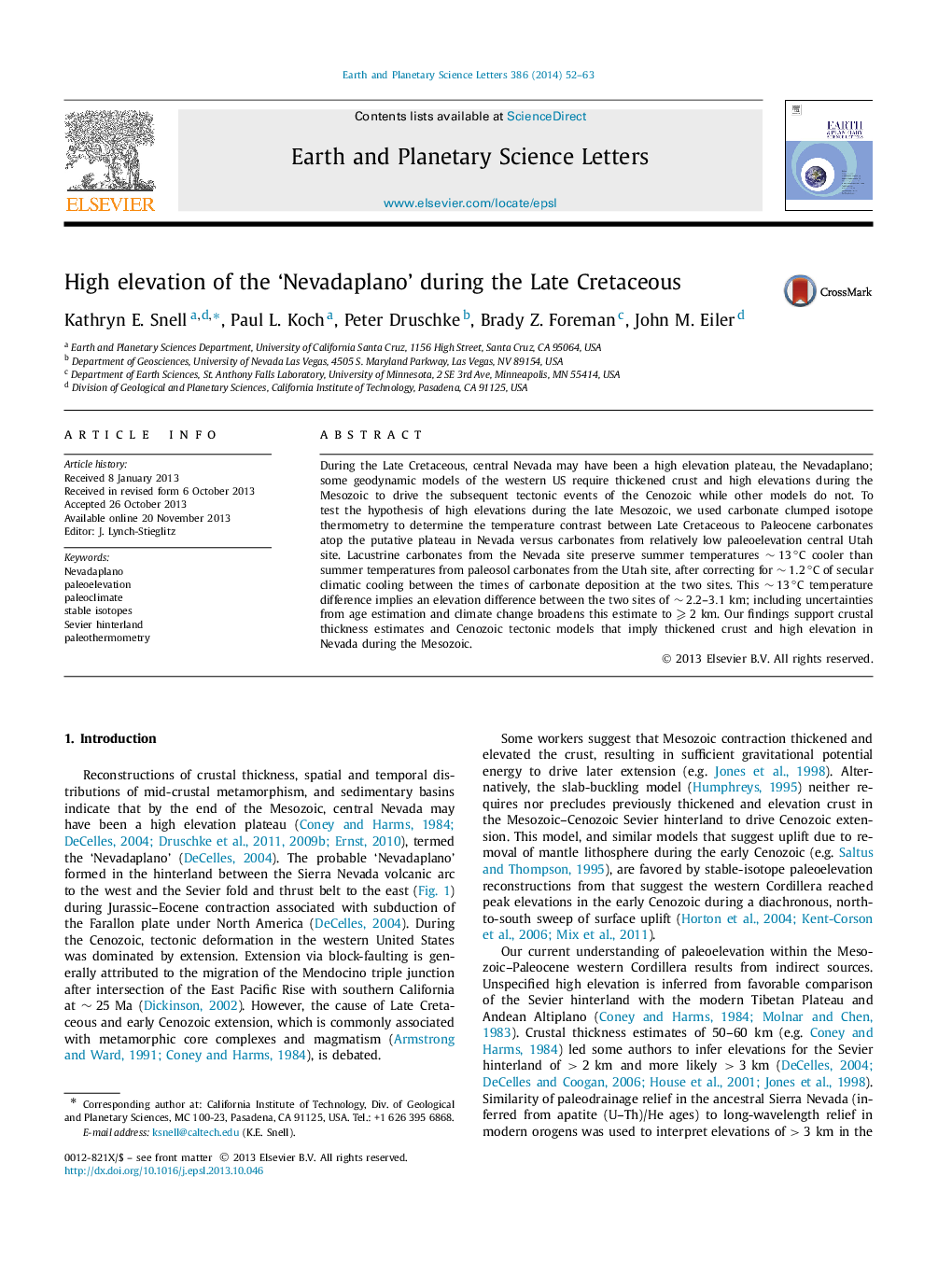| Article ID | Journal | Published Year | Pages | File Type |
|---|---|---|---|---|
| 6429823 | Earth and Planetary Science Letters | 2014 | 12 Pages |
â¢Clumped isotope thermometry is applied to Late Cretaceous and Paleocene terrestrial carbonates.â¢The temperature estimates reflect summer conditions.â¢When corrected for climate change, the temperature difference is 13.0â°C.â¢The temperature difference implies a minimum elevation of 2.2-3.1 km for central Nevada.â¢Uncertainties in our estimate broaden the range to ⩾2 km.
During the Late Cretaceous, central Nevada may have been a high elevation plateau, the Nevadaplano; some geodynamic models of the western US require thickened crust and high elevations during the Mesozoic to drive the subsequent tectonic events of the Cenozoic while other models do not. To test the hypothesis of high elevations during the late Mesozoic, we used carbonate clumped isotope thermometry to determine the temperature contrast between Late Cretaceous to Paleocene carbonates atop the putative plateau in Nevada versus carbonates from relatively low paleoelevation central Utah site. Lacustrine carbonates from the Nevada site preserve summer temperatures â¼13â°C cooler than summer temperatures from paleosol carbonates from the Utah site, after correcting for â¼1.2â°C of secular climatic cooling between the times of carbonate deposition at the two sites. This â¼13â°C temperature difference implies an elevation difference between the two sites of â¼2.2-3.1 km; including uncertainties from age estimation and climate change broadens this estimate to ⩾2 km. Our findings support crustal thickness estimates and Cenozoic tectonic models that imply thickened crust and high elevation in Nevada during the Mesozoic.
